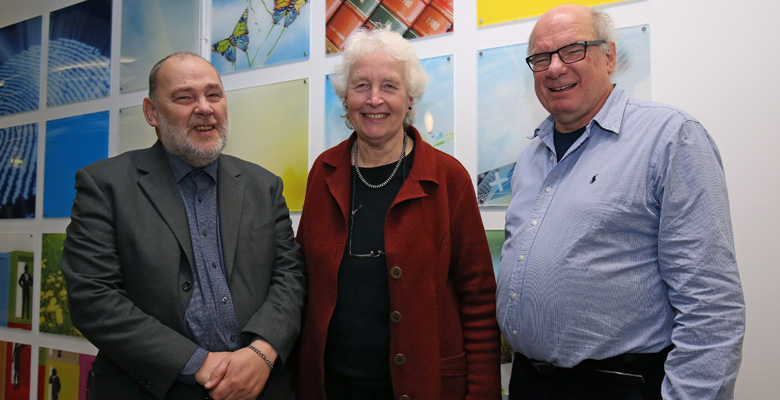Thoughtful design can help people with Dementia

Professor Mary Marshall OBE, director for 16 years of the world expert’s in applied dementia research: the Dementia Services Development Centre at the University of Stirling, gave an architectural lecture which explained why certain designs in buildings can be distressing for people with dementia.
The lecture began by outlining the different types of dementia and how these impact upon sight, sound and reasoning.
Professor Marshall explained how, as people with dementia are individuals, no one feature is going to solve the problems, but steps can be taken to alleviate stress.
She outlined research which has revealed that more privacy, more residential character and more personalisation can reduce stress, and nature also reduces anxiety and frustration. Light, she said, is important as it helps people stay alert in the day and to sleep at night. Noise which is not controllable leads to aggression and anger and she said there is a clear need to design for impaired reasoning, outlining how not being able to work things out easily can be very frustrating and therefore controls and signs should be easy to understand.
She explained there is misinformation regarding dementia, outlining that ‘dementia colours’ do not exist, but she said it is important that items contrast because older people (the core group who suffer from dementia) find it hard to distinguish between similar shades of colours, and used navy and black as an example. She added, however, that contrast must not be too stark. Colour, she explained, is made of at least three things; hue (the colour itself, i.e. blue, green, etc), tone (the reflective value) and saturation (the depth of the colour). When designing for dementia she said colours can have a different hue but should have the same tone. She said a common mistake is to assume that old people can see no hue at all, which leads to bland, uninteresting designs.
Open to all, the lecture was attended by architecture students, professional architects and members of the public. It was organised by LJMU Medical Humanities Group, Halsall Lloyd Architects, for Innovate Dementia Europe, Dementia Alliance, SURF Service Users and MerseyCare NHS Trust.
Caption: Pictured with Professor Mary Marshall are LJMU Reader in Architecture, Dr Rob MacDonald, and Senior Partner at Halsall Lloyd Partnership, Bill Halsall, both authors of the recently launched title ‘Design for Dementia.’
For more information, email liverpool@hlpdesign.com


